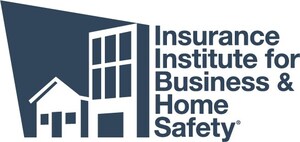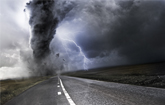IBHS To Host Wildfire Demonstration On March 6
Event will showcase risk of embers from wildfires, and effective, affordable ways home and property owners can reduce or avoid damage
RICHBURG, S.C., March 4, 2019 /PRNewswire/ -- Wildfires occur in every state in the U.S., but many homeowners — even in high- and moderate-risk areas — do not understand or take reasonable, affordable steps to reduce their risk of property damage and loss.
"During 2018, wildfire caused more loss of life and more property damage than any other weather-driven peril in the U.S., including two major hurricanes," said Roy Wright, CEO and President of the Insurance Institute for Business & Home Safety (IBHS). "These wildfires are becoming far more severe. Yet there are practical steps that can be taken by individual property owners, community planners, and state and federal leaders to reduce our collective risk from wildfire and make our neighborhoods safer and more resilient. Without question, building resilience against wildfires requires full engagement from all of these stakeholders and an all-of-the-above approach to actions they can take."
In a full-scale demonstration on March 6, IBHS will simulate an active wildfire for press and guests. IBHS will cast embers at a structure in our iconic test chamber in Chester County, S.C. The test structure is a small house built and landscaped on one side as a wildfire-resistant structure, and on the other side with common materials used when wildfire resistance is not a consideration. We expect to see ignition on the non-wildfire-resistant side of the test house structure. Press should contact Susan Millerick for details.
"It's all about the embers and making sure they have nothing combustible to land on," said Daniel Gorham, P.E., wildfire researcher at IBHS.
In wildfire situations, embers cause most of the home and business ignitions. Embers, also called firebrands, can fly for miles ahead of the wildfire front, transported by winds that are typical during wildfires. If they get inside a home through vents or an open or broken window, or if they land on dead vegetation, dry wood, or common building materials near the home, they can ignite a new fire which can then consume that home and start a chain of fires within a neighborhood or community.
"Scientific research in our lab and in the field has shown that the key to improving wildfire resistance is to remove anything combustible from on or near your home or business so that when these embers land, they will die from a lack of fuel to burn."
Property owners can take two incredibly important measures to help defend their property against wildfire.
"First, home and property owners must approach property maintenance as a matter of eternal vigilance," Gorham said. "Nothing that can ignite, including pine needles or dead leaves, twigs, bushes or plants, should be allowed within five feet of the home, including under the footprint of attached decks. This 'noncombustible zone' is critical and works together with defensible space and vegetation management taken in zones from 5- to 100-feet from the house.
"Second, property owners who are building or retrofitting should choose not only Class A fire-rated roofing, but also siding, windows and doors. Even small choices such as vent screens with smaller mesh sizes will reduce the size and number of embers that can enter a building and potentially save a home."
New research from Headwaters Economics and IBHS shows that building a wildfire-resistant new home or retrofitting portions of an existing home is only nominally more expensive – and in some cases less expensive – than choosing standard materials that are not wildfire resistant.
Video and still images from the demonstration will be posted following the demonstration along with consumer-friendly information, guidance and recommendations from leading wildfire officials and IBHS researchers. IBHS invites the press to share the information in their reporting. Topics include:
- Maintaining defensible space, including the 5-foot noncombustible zone
- Risks posed by decks and ways to reduce those risks
- The comparable or even lower cost of wildfire-resistant building materials
- Guidance on fire-retarding gels
As always, full guidance for consumers is available on www.disastersafety.org/wildfire.
About the Insurance Institute for Business & Home Safety (IBHS)
IBHS' mission is to conduct objective, scientific research to identify and promote effective actions that strengthen homes, businesses and communities against natural disasters and other causes of loss. To learn more about IBHS, please visit disastersafety.org.
SOURCE Insurance Institute for Business & Home Safety
Related Links
WANT YOUR COMPANY'S NEWS FEATURED ON PRNEWSWIRE.COM?
Newsrooms &
Influencers
Digital Media
Outlets
Journalists
Opted In





Share this article